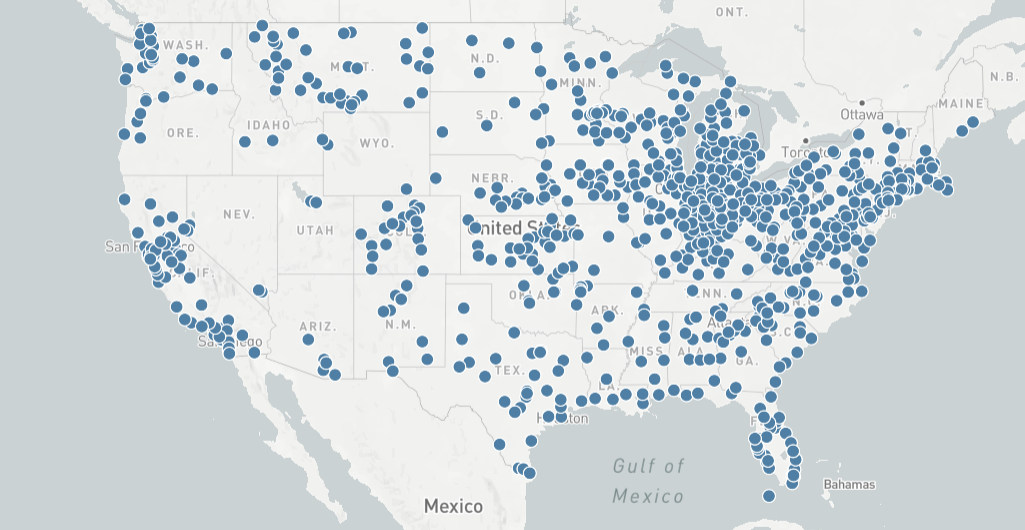Day-to-day operations
Municipal budgets still provide the bulk of funding for urban forestry programs: salaries, contractors, equipment, maintenance, database management, education and a lot of other tasks that come with the job. Of course, volunteers can supplement staff efforts. But putting them to work requires training, equipment, time spent on quality assurance and control and nurturing your volunteer stewards.
Creative communities try to find other sources
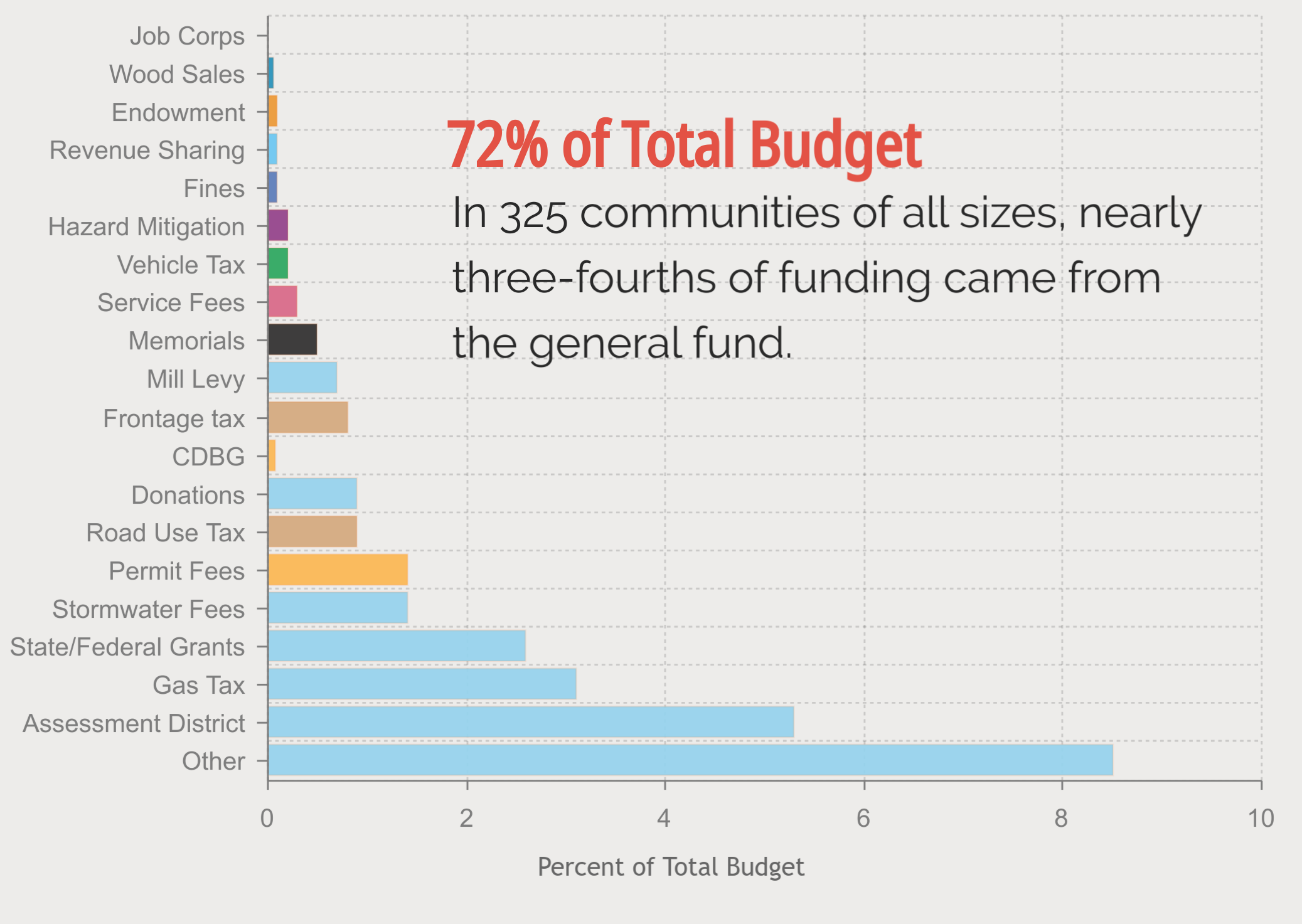
Sources of FundingRichard Hauer and Ward Peterson, Municipal Tree Care and Management in the US: A 2014 Census of Urban and Community Forestry Tree Activities. A worthwhile read.
But no one alternative seems to take much pressure off municipal budgets.
Some of these local funding approaches may work for you
They’ve worked in other places. Examples of different revenue sources for street tree and park tree management include:
- Urban wood sales
- Stormwater utility fees — usually based on percent of impervious cover on a lot, often with credits for tree planting and rain gardens
- Fines for removing trees without a permit can range from a few hundred dollars to hundreds of thousands [in Atlanta one homeowner paid $177,000 for removing trees without a permit] and even jail time
- A diverse set of development fees (sometimes called impact fees) related to permit processing and enforcement from zoning, subdivision, stormwater codes
- Social impact/green bonds
- Carbon credits/offsets
- Municipal portion of state motor fuel tax — difficult, but doable with public support
- Healthcare investments from agencies and/or institutions
- Energy utility/tree-based conservation activities
- Tree preservation fund payments in lieu of replacing trees removed — with fees that escalate for larger, more significant trees
- Business improvement districts or BIDs — common in the largest 50 cities, and in many smaller communities
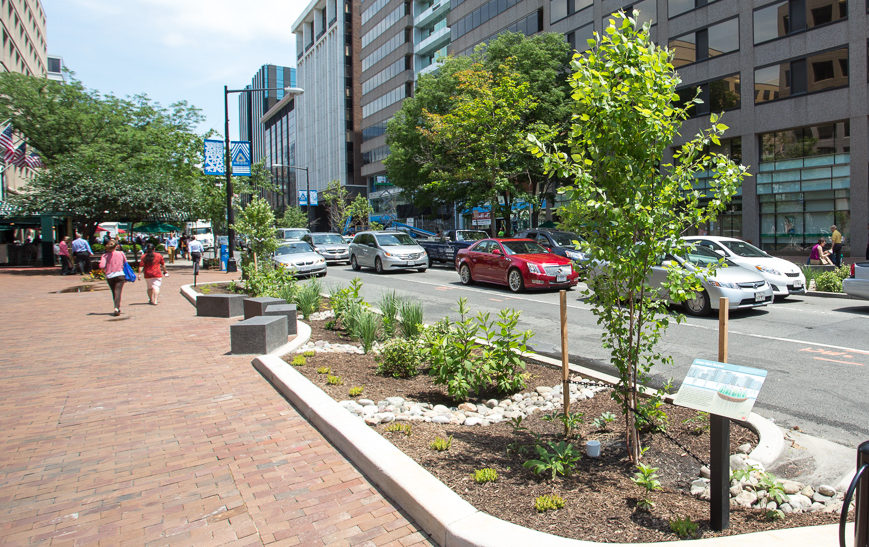
Golden Triangle BIDBusiness owners in this DC retail/office corridor all donated to create state-of-the-art green infrastructure, with curb cuts, rain gardens and tree planting.
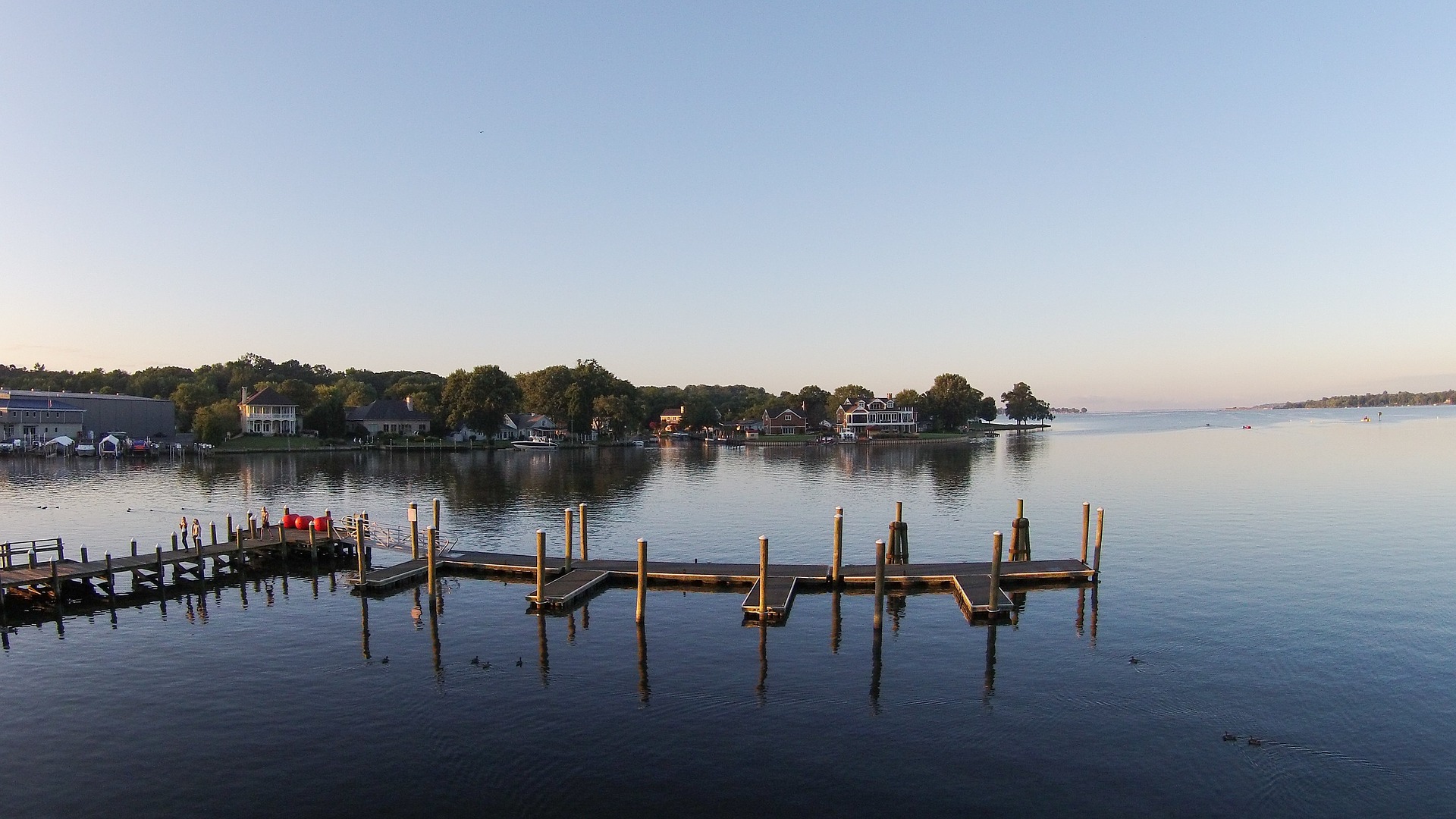
Maryland Environmental Finance Center at the University of MarylandThe Center has produced a guide to funding urban forestry programs in communities around the Chesapeake Bay Region [depicted above]. The guide includes case studies of how individual programs have been financed on an annual basis.
Endowments
Organizations with a solid track record and a strong community presence often seek to raise an endowment — a fund made up of contributions and bequests from donors that the board can expend at its discretion.
Most endowments are restricted to specific purposes, but many donors permit broad use of income from the funds they’ve contributed. Virtually all groups limit by board policy the amount of money they can draw annually from the endowment — often 4 or 5 percent of the total assets invested. [To even out market swings, some calculate the percentage against a three-year trailing average of endowment assets.]
You’ll need major gifts to build your endowment. Soliciting large donations is part art, but also part science. Often a consultant can provide important research on potential donors using special databases that highlight prospects “reachable” by your board or staff.
For an example of how a smallish, local nonprofit [aided by a consultant] raised an endowment fund totaling nearly $5 million along with other annual contributions, check out their website here. Consultants can also plan campaigns and help keep them on schedule. Before hiring, check credentials and — most important, their track record in your community.
Major initiatives and projects
Rarely can an organization or agency find the funds to undertake big one-time-only jobs in their operating budgets. Whether it’s an urban forest management plan, streetscape renovation or planting trees on vacant lots — new money will need to be found. Somewhere.
Typical projects
There aren’t any. Each source of funds has its own priorities. Below are some recent examples of projects supported by different types of funders.
Local sources
Often the bulk of funding for urban forestry comes from community foundations. Many manage funds set up by individual major donors — so they’re also a good way to develop local champions for urban forestry. Some serve multiple communities, even whole states. As you pore through their websites, make certain you look at donor-advised funds. These are funding vehicles set up by individuals and families. Often they have priorities that may not be reflected on the main website. Click on the map below to find community foundations near you.
Check their websites to learn what’s being funded, how and for what types of projects. It’s not likely that many grants are being directed at urban forestry. But don’t overlook other categories – like public health, climate change, flooding, energy conservation, or education – where urban forestry initiatives can make a big difference.
In addition to their funding priorities and how they might fit your project, you should also note:
- Board members who are often philanthropic leaders in their communities
- Staff members you might seek out for general advice and information about who’s funding what
- Organizations with repeated grants, especially if their work overlaps with yours
- Donors to the community foundation who’ve set up their own self-directed funds
And don’t forget to learn their grant guidelines and application process.
We’ve already done some of the work
For each state, we’ve identified four or five funders that have made grants to urban forestry-related programs. By clicking on your state, or by using the dropdown box, you can also see what organizations received grants and what types of programs were funded.
Important Tip: The grants, grantees and funding sources shown for each state were drawn from databases that reach back several years. Funders change priorities and staff frequently. Accordingly, the sources and grantees shown here may be outdated. Still, it’s worthwhile to look at the websites and grant profiles noted here. You’ll get a good sense of how foundations work; local grantmaking by national foundations; and the grant-seeking process.
State and federal funding
Yes, the feds do fund urban forestry — and not just through the USDA Forest Service’s Urban and Community Forestry Program. the bulk of the money for city trees comes from other agencies — from HUD to EPA, DOT to DOJ — and through multi-agency partnerships like the Five Star and Urban Waters Restoration Grants funded in part by the Forest Service and administered by the Congressionally-chartered National Fish and Wildlife Foundation. Don’t be waylaid by the acronyms; at the right time, at the right place, for the right project — you can succeed. Some of the largest sources of funding aim to protect water quality and recover from disasters.

 Before you take on the Feds
Before you take on the Feds
- smaller projects generally won’t work, though some agencies may have local “small grants” programs
- works primarily for municipal governments and public/private/nonprofit partnerships
- without municipal and broad coalition support, it’s hard to succeed
- programs may not be available, may have expired, or rescinded by a new administration
Explore grants.gov
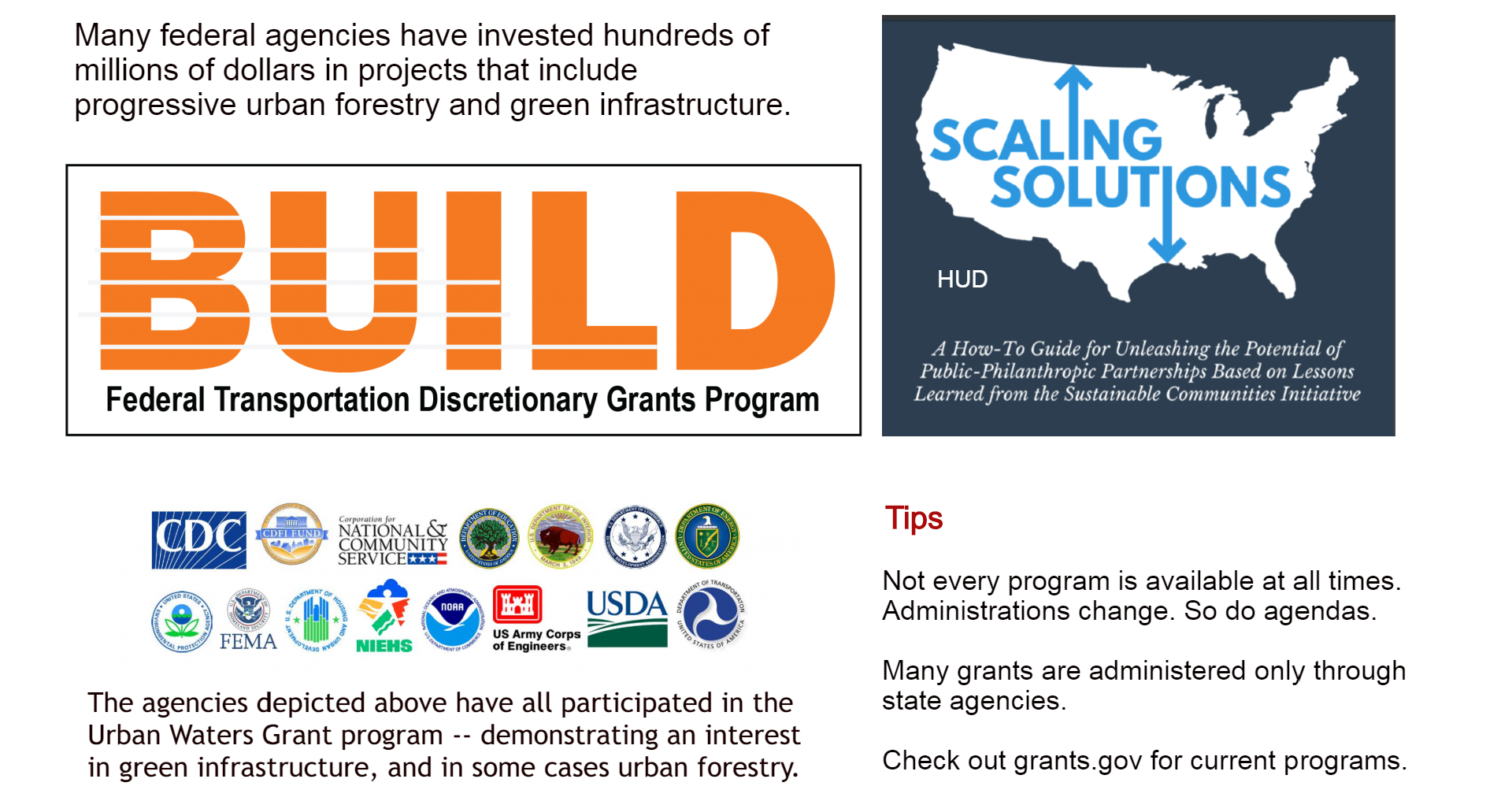 <
<
Find state agency partners
Each state has a different relationship with the federal agencies that disburse funds. The Environmental Finance Center Network provides up-to-date reporting on which states and agencies manage applications for federal water quality grants — often a source for green infrastructure and urban forestry funds. To access an interactive map for water quality projects from 2020, click here and choose your state.


